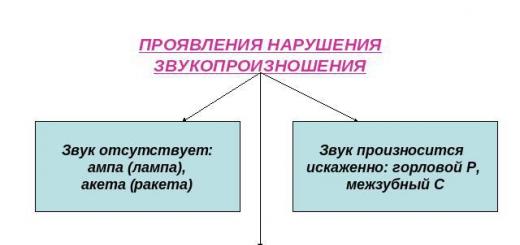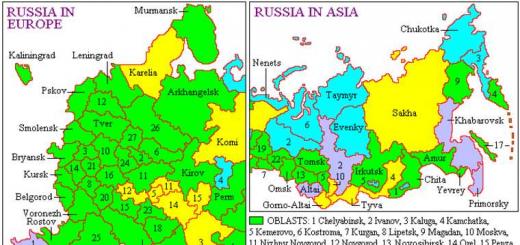Mechanism of electrophilic substitution reactions in the aromatic ring includes a number of successive stages.
1) Formation of an Electrophilic Particle . Typically, electrophilic species are formed during the reaction in the presence of catalysts and appropriate conditions. For example, when heating nitric acid, a nitronium cation is formed (a), sulfuric acid - a sulfonium cation (b), and when halogenation (for example, chlorination) an electrophilic particle is formed, which can be represented by a halogen cation or in the form of a halogen complex with a catalyst (c) :
nitronium sulfonium
cation cation
Or ![]()
chlorine complex
cation with catalyst
2) Formation of p-complex occurs during an attack p- electron cloud of the ring by an electrophilic particle, for example, a complex of chlorine with a catalyst, thereby forming p - complex by donor-acceptor type.
3)Formation of the s-complex occurs when a covalent bond occurs between an electrophile and the carbon atom of the benzene ring, due to a pair of electrons p- ring system, which is accompanied by the transition of the carbon atom from sp 2 - in sp 3 - hybridized state.
4) Formation of the final product carried out due to the abstraction of a hydrogen proton from s- complex using a base.
Scheme of the mechanism of the electrophilic substitution reaction in benzene
using the example of the chlorination reaction

Electrophilic substitution in benzene leads to the formation of a single monosubstitution product, which is determined by the uniform distribution of electron density in the conjugated ring system and, accordingly, an equally probable attack by the electrophile on any of the six carbon atoms of benzene.
Substitution reactions
Electrophilic substitution in benzene presented by schemes for the synthesis of benzene homologues (a) and its derivatives (b).
a) Synthesis of benzene homologues:

b) Synthesis of benzene derivatives:

Halogenation. Benzene under normal conditions does not interact with chlorine and bromine. The reaction occurs only in the presence of catalysts, which are most often aluminum and iron halides (Lewis acids).
Nitration. Benzene is nitrated with a mixture of concentrated nitric and sulfuric acids ( nitrating mixture) when heated to 60 o C with the formation of nitrobenzene.
Sulfonation. When benzene reacts with concentrated acid or oleum ( mixture of concentrated sulfuric acid and sulfuric anhydride– SO 3) benzenesulfonic acid is formed.
Acylation is one of the methods for the synthesis of aromatic ketones. Acid chlorides (RCOCI) or acid anhydrides (RCO-O-OCR) are used as acylating reagents. The reaction is carried out in a non-polar solvent in the presence of aluminum chloride.
Alkylation is one of the ways to obtain benzene homologues. Haloalkanes, alcohols and alkenes in the presence of metal halides (aluminum, iron, tin, etc.) can be used as alkylating reagents.
Orientation rules in electrophilic reactions
Substitutions in benzene
In derivatives of benzene and its homologues, substituents disrupt the uniform distribution of electron density and thereby, in a certain way, affect the reactivity and direction of attack in the benzene ring. Let us consider the orienting influence of substituents, due to the total effect of their electronic effects (see 2.5; Table 2.2), using the example of phenol and nitrobenzene.
In a molecule phenol the substituent (-OH) exhibits negative inductive (-I ) And positive mesomeric (+M ) electronic effects, the latter being predominant in the total electron donor(ED ) action (a). Electronic effect ED substituent leads to redistribution of electron density in the ring raising her in ortho- And pair– positions in which relieved
In a molecule nitrobenzene the substituent (-NO 2) exhibits negative inductive (-I ) And negative mesomeric (+M ) electronic effects, which manifests itself in the total electron-withdrawing (EA ) action (b). Electronic effect EA substituent leads to a redistribution of electron density in the ring, lowering her in ortho- And pair– positions in which finds it difficult attack by electrophilic reagents.


phenol nitrobenzene
Substitution rules:
1) Electron-donating substituents (ED ) increase the electron density of the ring and thereby increase the rate of electrophilic substitution reaction. To the substituents exhibiting ED character, the groups include: - NH 2, - OH, - OR, - R, which orient electrophilic substitution in ortho- And pair- position. The exception is halogens, which direct the electrophilic species preferentially to pair- position.
2) Electron-withdrawing substituents (EA ) reduce the electron density of the ring and thereby reduce the rate of electrophilic substitution reaction. To the substituents exhibiting EA character, include groups: - NO 2, - COOH, - SO 3 H, >C=O, etc., which orient electrophilic substitution in meta- position, making it difficult.
The rules of substitution can be demonstrated in the nitration reactions of benzene (a) and its derivatives containing electron-donating (b) and electron-withdrawing (c) substituents. The presented reaction schemes reflect the conditions and yield of the reaction product (in %), reflecting the activity of the orienting influence of the substituent in ortho-, meta- or pair– provisions. As a rule, the reaction equation indicates the direction of electrophilic attack that is more preferable under given reaction conditions:
a) nitration of benzene:

nitrobenzene
b) nitration of phenol:

ortho-nitro- pair-nitro- picric
phenol phenol acid
c) nitration of nitrobenzene:

meta-dinitrobenzene
The electronic effects of substituents make it possible to arrange the given compounds in the following series according to the decrease in activity in the nitration reaction: phenol, benzene and nitrobenzene.
If there is more than one substituent on the benzene ring, then there are orienting influence May be agreed upon or inconsistent, depending on their type and relative position.
An example of a coordinated orientation is the nitration reaction ortho- nitrophenol and pair- nitrophenol to picric acid (reaction b). In this case, both substituents (electron-donating - OH, electron-withdrawing - NO 2) coordinately orient the subsequent electrophilic substitution in ortho- And pair- position relative to the hydroxyl group.
Orienting influence ED the substituent is decisive in the electrophilic substitution reaction, in the case of its inconsistent orienting action with EA deputy
The rules for the orienting influence of substituents are used for targeted synthesis, including several sequential reactions. For example, to obtain from toluene ortho-, meta- And pair- nitrobenzoic acids must undergo nitration and oxidation reactions in a certain sequence.

The methyl group (- CH 3) belongs to electron-donating substituents; accordingly, according to the rules of orienting influence, it directs electrophilic substitution to ortho- And pair- provisions (a).
The carboxyl group (-COOH) is an electron-withdrawing substituent; accordingly, according to the rules of orienting influence, it directs electrophilic substitution to meta- position (b).
Thus, in order to obtain all isomers of nitrobenzoic acid from toluene, it is necessary to carry out the synthesis in accordance with the reaction schemes presented below.
a) Synthesis scheme ortho - And pair - isomers of nitrobenzoic acid involves initially carrying out a nitration reaction, and then oxidation:

b) Synthesis scheme meta – the isomer of nitrobenzoic acid involves initially carrying out an oxidation reaction, and then nitration:

General view of electrophilic substitution reactions:
R − X + Y + → R − Y + X + (\displaystyle (\mathsf (R\!\!-\!\!X+Y^(+)))\rightarrow (\mathsf (R\!\! -\!\!Y+X^(+))))(cationic electrophile)
R − X + Y − Z → R − Y + X − Z (\displaystyle (\mathsf (R\!\!-\!\!X+Y\!\!-\!\!Z))\rightarrow ( \mathsf (R\!\!-\!\!Y+X\!\!-\!\!Z)))(neutral electrophile)
There are aromatic (widespread) and aliphatic (less common) electrophilic substitution reactions. The nature of electrophilic substitution reactions specifically for aromatic systems is explained by the high electron density of the aromatic ring, which can attract positively charged particles.
Aromatic electrophilic substitution reactions play an extremely important role in organic synthesis and are widely used both in laboratory practice and in industry.
Encyclopedic YouTube
1 / 5
✪ Electrophilic Aromatic Substitution
✪Mechanism of electrophilic aromatic substitution
✪ Alkenes. The mechanism of the electrophilic addition reaction.
✪ Mechanisms of chemical reactions. Part 2. Classification of mechanisms. Electrophilic and nucleophilic reactions.
✪ Classification of reactions: nucleophiles, electrophiles, radicals
Subtitles
We have already talked about the benzene ring. Okay, I drew it poorly, let me redraw it. So, we have already discussed that the stability of benzene is related to its aromaticity. These electrons in these π orbitals that form double bonds do not belong only to these bonds. They are in constant motion. This one can go here. This one goes here. And this one is here. Electrons don't just move back and forth. They “circulate” throughout the ring. Thus, the aromatic molecule is more stable. We have already seen examples of aromatic compounds, or, more correctly, we have seen examples of a benzene ring with introduced substituents, halogen substituents or an OH group. In this video tutorial, I would like to take a closer look at how you can add a substituent to the benzene ring. Today we will study electrophilic aromatic substitution. Let's write it down. Electrophilic aromatic substitution. You might rightly point out, “Sal, you said you were adding substituents.” But in reality, benzene already has six hydrogen atoms. There's one hydrogen, two hydrogens, three hydrogens, four hydrogens, five hydrogens and finally six hydrogens. Benzene always has them. And, even without drawing them, we mean them. When we add chlorine or bromine, or an OH group, we replace them with one of the hydrogen atoms. That's why it's called "substitution". And “aromatic” because we are dealing with a benzene ring. So we'll be looking at an aromatic molecule, and we'll see that for the substitution to take place, we need a very strong electrophile. Let's try to imagine how this will happen. But first, let me copy and paste the picture so I don't have to redraw it. Let's copy it. Let's say we have a really strong electrophile. In the next video tutorial we will look at several specific examples so that you understand what a strong electrophile is. But I think the word "electrophile" itself suggests that it is something that loves electrons. The electrophile wants electrons very, very, very badly. And usually the electrophile has a positive charge. So it requires electrons. Let's clarify this point a little. Let's not write that an electrophile needs electrons. Because when we talk about electrophiles or nucleophiles, we mean their reactivity. Let's write it differently: accepts electrons. It's really, really, really good at accepting electrons. What will happen? As we have already said, benzene is a stable molecule. These electrons, these π-electrons, are constantly circulating. What happens if such a molecule collides in a certain way with an electrophile molecule? Let's label this electron here. As can be seen from the figure, it is located at this carbon atom. I think it's clear that carbon is here. Although I didn’t really draw it. But if this electrophile, which is good at accepting electrons, collides in a certain way with benzene, then this electron will go to the electrophile. So, in this way... Let me just copy and paste the original molecule. So what has changed now? We no longer have this connection. This carbon is now bonded to the electrophile. Let's make this clear. This electron was here before. That electron still belongs to that carbon, and the other electron goes to the electrophile, who happily takes it for himself. So now this electron belongs to the electrophile. The electrophile thus gained an electron. Before this it was positively charged, but now it is neutral. I repeat that we will look at specific examples in the following video tutorials. Let's return to substitution. We can now see this connection here. This carbon atom here has lost an electron. And because it has lost an electron, it will become positively charged. In fact, doing this with a resonance-stabilized molecule is not easy. Therefore, as I have repeatedly said, a really strong electrophile must participate in the reaction. It is worth noting that the resulting carbocation is relatively stable. And, despite the fact that it is just a secondary carbocation, it turns out to be stable due to resonance. This electron can go to the carbocation. If this happens, this is what we get. Let's redraw the ring. Let's draw the resonant structures as quickly as possible. Here we have hydrogen. Electrophile here. Actually, this is no longer an electrophile, we just call this substituent "E". There's hydrogen here. There's a double bond here. Let's draw it a little more carefully. Here we have hydrogen. Here is hydrogen, here is hydrogen and here. And I said that this structure is stabilized. An electron from here can jump here. If this electron goes over here, the double bond will now end up here. Again. The electron will go here and the double bond is now here. This carbon atom gave up its electron and is now positively charged. That is why such a structure turns out to be resonantly stabilized. The electron can return us to the previous structure, or it can jump here on its own. Let me redraw it all again. Let's draw all the hydrogen atoms at once. Here we have a substituent and a hydrogen atom. More hydrogen here, more here, here and here. Usually we don't pay that much attention to hydrogens, but since one of these atoms will be split off during the mechanism, in this case I prefer to label them so as not to forget that hydrogen atoms are there. Let's return to resonant stabilization. If this electron goes here, then this double bond will end up here. This carbon atom has lost an electron and now carries a positive charge. Let's draw this double bond that was here at the top in the same place where it was. We can move from one structure to another. Electrons are constantly moving around the ring. Of course, we are not talking about such strong stabilization if this molecule were completely aromatic. The electrons moved around the π orbitals again and again, thereby stabilizing the structure. But this carbocation is still relatively stable due to the “circulation” of electrons around the ring. We can also think of this positive charge as being "smeared" between this carbon, this carbon, and this carbon. However, this connection lacks stability. The molecule wants to become aromatic again, to regain its stable state. And in order to return to a stable state, the carbocation needs to somehow gain an electron. The way a carbocation can gain an electron is for a base in its environment to remove that proton, a proton from a carbon atom that is also bound to the electrophile. So this base removes a proton. We're only talking about the hydrogen nucleus, since the hydrogen electron stays here. Let's paint this in a different color. More precisely, this is the electron that hydrogen had, now it goes to the carbon atom here. This intersection of lines looks a little confusing. The electron can go to this carbon. What will we get then? And this is what we get. So, if this happens... Let's draw our six-membered ring in yellow. Now let's draw all the hydrogens. Which color should I choose? Let's paint them green like this. So, let's draw all the hydrogen atoms. Now let's take our time. This hydrogen, or rather only its nucleus, split off the base. Thus, the hydrogen atom has moved to the base. This electron was transferred to the hydrogen atom. So one electron has gone to this hydrogen, and the second electron still belongs to the base. We've got a base's conjugate acid, in other words, a base that's gained a proton. And this carbon atom is now connected only to the substituent, which was previously our electrophile. Let's paint it with one color for simplicity. What used to be an electrophile is right here, and this bond corresponds to this bond. Left a little. We'll stick to the same colors. This double bond corresponds to this double bond. We have this double bond. This double bond that we now draw here. And then that electron will go back to the top carbon atom. Let's put everything in order. This bond and this electron goes back to this top carbon. Let's draw the bond and the electron that are back in place. This top carbon is no longer positively charged. And we again get a resonant-stabilized structure. I forgot to mention the charges. It could be that this base was negatively charged. Although it is not at all necessary. But, if this base had a negative charge, then after it gives up its electron to hydrogen, the negative charge will disappear. This has its own logic, because at first we had both positive and negative charges, and after everything reacted, the charges disappeared. The total charge is zero. Let's return to the issue of electrophilic aromatic substitution. We've replaced one of these hydrogens. We replaced this hydrogen here with an electrophile. What was once an electrophile, after gaining an electron, is now just a substituent attached to the benzene ring. And, having gone through this entire difficult path, we finally came to a new aromatic molecule with an E-substituent. In the next video tutorial we will look at specific examples of electrophiles and bases. Subtitles by the Amara.org community
Aromatic electrophilic substitution reactions
For aromatic systems, there is actually one mechanism of electrophilic substitution - S E Ar. Mechanism S E 1(similar to the mechanism S N 1) - is extremely rare, but S E 2(corresponding by analogy S N 2) - does not occur at all.
Reactions S E Ar
Reaction mechanism S E Ar or aromatic electrophilic substitution reactions(English) Electrophilic aromatic substitution) is the most common and most important of the substitution reactions of aromatic compounds and consists of two stages. At the first stage, the electrophile is added, and at the second stage, the electrofuge is separated:
| Reaction rate = k** |
The attacking particles are usually relatively weak electrophiles, so in most cases the reaction S E Ar occurs under the influence of a catalyst - Lewis acid. The most commonly used are AlCl 3, FeCl 3, FeBr 3, ZnCl 2.
In this case, the reaction mechanism is as follows (using the example of benzene chlorination, catalyst FeCl 3):
1. At the first stage, the catalyst interacts with the attacking particle to form an active electrophilic agent:
C l − C l + F e C l 3 ⇄ C l − C l + ⋅ ⋅ ⋅ F e C l 3 − ⇄ C l + F e C l 4 − (\displaystyle (\mathsf (Cl\!\!- \!\!Cl+FeCl_(3)))\rightleftarrows (\mathsf (Cl\!\!-\!\!Cl^(+)))\!\cdot \cdot \cdot (\mathsf (FeCl_(3 )^(-)))\rightleftarrows (\mathsf (Cl^(+)FeCl_(4)^(-))))
2. At the second stage, in fact, the mechanism is implemented S E Ar:
H N O 3 + 2 H 2 S O 4 → N O 2 + + H 3 O + + 2 H S O 4 − (\displaystyle (\mathsf (HNO_(3)+2H_(2)SO_(4)))\rightarrow (\mathsf ( NO_(2)^(+)+H_(3)O^(+)+2HSO_(4)^(-))))
| Reaction rate = k** |
X 2 + F e X 3 → X + + F e X 4 − (\displaystyle (\mathsf (X_(2)+FeX_(3)))\rightarrow (\mathsf (X^(+)+FeX_(4) ^(-))))
In substituted benzenes, the so-called ipso-attack, that is, replacing an existing substituent with another:
Aliphatic electrophilic substitution reactions
Reactions S E 1
Reaction mechanism S E 1 or monomolecular electrophilic substitution reactions (
Electrophilic substitution reactions(English) substitution electrophilic reaction ) - substitution reactions in which the attack is carried out electrophile- a particle that is positively charged or has a deficiency of electrons. When a new bond is formed, the outgoing particle is electrofuge splits off without its electron pair. The most popular leaving group is the proton H+.
General view of electrophilic substitution reactions:
(cationic electrophile)
(neutral electrophile)
There are aromatic (widespread) and aliphatic (less common) electrophilic substitution reactions. The nature of electrophilic substitution reactions specifically for aromatic systems is explained by the high electron density of the aromatic ring, which can attract positively charged particles.
Aromatic electrophilic substitution reactions play an extremely important role in organic synthesis and are widely used both in laboratory practice and in industry.
Aromatic electrophilic substitution reactions
For aromatic systems, there is actually one mechanism of electrophilic substitution - S E Ar. Mechanism S E 1(similar to the mechanism S N 1) - is extremely rare, but S E 2(corresponding by analogy S N 2) - does not occur at all.
Reactions S E Ar
Reaction mechanism S E Ar or aromatic electrophilic substitution reactions(English) Electrophilic aromatic substitution ) is the most common and most important of the substitution reactions of aromatic compounds and consists of two stages. At the first stage, the electrophile is added, and at the second stage, the electrofuge is separated:

During the reaction, a positively charged intermediate is formed (in Figure 2b). It's called Ueland intermediate, aronium ion or σ-complex. This complex is generally very reactive and is easily stabilized, quickly eliminating the cation.
Limiting stage in the vast majority of reactions S E Ar is the first stage.
Speed reaction S E Ar, usually presented in the following form:
| Reaction rate = k** |
The attacking particles are usually relatively weak electrophiles, so in most cases the reaction S E Ar occurs under the influence of a catalyst - Lewis acid. The most commonly used are AlCl 3, FeCl 3, FeBr 3, ZnCl 2.
In this case, the reaction mechanism is as follows (using the example of benzene chlorination, catalyst FeCl 3):
1. At the first stage, the catalyst interacts with the attacking particle to form an active electrophilic agent:
2. At the second stage, in fact, the mechanism is implemented S E Ar:

Typical aromatic electrophilic substitution reactions
| Reaction rate = k** |
In substituted benzenes, the so-called ipso-attack, that is, replacing an existing substituent with another:

Aliphatic electrophilic substitution reactions
Reactions S E 1
Reaction mechanism S E 1 or monomolecular electrophilic substitution reactions(English) substitution electrophilic unimolecular ) similar to the mechanism S N 1 includes the following stages:
1. Ionization of the substrate with the formation of a carbanion (slow stage):
2. Electrophilic attack of carbanion (fast stage):
Most often an escaping particle in extremely rare reactions S E 1 is a proton.
Reactions S E 2
Reaction mechanism S E 2 or bimolecular electrophilic substitution reactions(English) substitution electrophilic bimolecular ) similar to the mechanism S N 2, occurs in one stage, without the intermediate formation of an intermediate:
The main difference from the nucleophilic mechanism is that the attack of the electrophile can be carried out either from the front or from the rear, which can result in a different stereochemical result: both racemization and inversion.
An example is the ketone-enol tautomerization reaction:

Ketone-enol tautomerization
Notes
| Chemical reactions in organic chemistry | |
|---|---|
| Substitution reactions | Nucleophilic substitution reactions Electrophilic substitution reactions· Radical substitution reactions |
| Addition reactions | Nucleophilic addition reactions Electrophilic addition reactions Radical addition reactions Synchronous addition reactions |
| Elimination reactions | Heterolytic elimination reactions Pericyclic elimination reactions Radical elimination reactions |
| Regrouping reactions | Nucleophilic rearrangements Electrophilic rearrangements Radical rearrangements |
| Oxidation and reduction reactions | Oxidation reactions Reduction reactions |
| Other | Named reactions in organic chemistry |
Wikimedia Foundation. 2010.
- - (English addition electrophilic reaction) addition reactions in which the attack at the initial stage is carried out by an electrophile particle that is positively charged or has a deficiency of electrons. At the final stage, the resulting... ... Wikipedia
Electrophilic substitution reactions are characteristic of aromatic, carbocyclic and heterocyclic systems. As a result of the delocalization of p-electrons in the benzene molecule (and other aromatic systems), the p-electron density is distributed evenly on both sides of the ring. Such shielding of the ring carbon atoms by p-electrons protects them from attack by nucleophilic reagents and, conversely, facilitates the possibility of attack by electrophilic reagents.
But unlike the reactions of alkenes with electrophilic reagents, the interaction of aromatic compounds with them does not lead to the formation of addition products, since in this case the aromaticity of the compound would be disrupted and its stability would decrease. Retention of aromaticity is possible if an electrophilic species replaces a hydrogen cation.
The mechanism of electrophilic substitution reactions is similar to the mechanism of electrophilic addition reactions, since there are general patterns of reactions.
General scheme of the mechanism of electrophilic substitution reactions S E:
At the first stage of the reaction, p-complex with an electrophilic particle (fast stage), which then turns into s-complex(slow stage) due to the formation s- bonding one of the carbon atoms with an electrophilic particle. For education s- connection with an electrophilic particle, a pair of electrons “breaks out” from conjugation, and the resulting product acquires a positive charge. IN s-complex aromaticity is disrupted because one of the carbon atoms is in sp 3 hybridization, and four electrons and a positive charge are delocalized on the other five carbon atoms.
To regenerate a thermodynamically favorable aromatic system, heterolytic cleavage of the C sp 3 -H bond occurs. As a result, the H + ion is split off, and a pair of bonding electrons goes to restore the conjugation system, while the hybridization of atomic orbitals of the carbon atom that removed the proton changes from sp 3 to sp 2 . The mechanism of reactions of nitration, sulfonation, halogenation, alkylation, acylation of aromatic compounds includes an additional stage not indicated in the general scheme - the stage of generating an electrophilic particle.
Reaction equationnitrationbenzene has the form:
In nitration reactions, the generation of an electrophilic particle occurs as a result of the interaction of nitric and sulfuric acids, which leads to the formation of the nitronium cation NO 2 +, which further reacts with an aromatic compound:
In a benzene molecule, all carbon atoms are equivalent; substitution occurs at one of them. If a molecule contains substituents, then the reactivity and direction of electrophilic attack are determined by the nature of this substituent. Based on their influence on reactivity and the direction of attack, all substituents are divided into two groups.
Orientants of the first kind. These substituents facilitate electrophilic substitution compared to benzene and direct the incoming group to the ortho and para positions. These include electron-donating substituents that increase the electron density in the benzene ring. As a result of its redistribution to positions 2,4,6 (ortho- and para-positions), partial negative charges arise, which facilitates the addition of an electrophilic particle to these positions with the formation s-complex.
Orientants of the second kind. These substituents make electrophilic substitution reactions more difficult compared to benzene and direct the incoming group to one of the meta positions. These include electron-withdrawing substituents that reduce the electron density in the benzene ring. As a result of its redistribution in positions 3,5 (meta-positions), partial negative charges arise and the addition of an electrophilic particle with the formation s-complex goes in tough conditions.
Halogen atoms direct the electrophilic particle to the ortho- or para-position (due to the positive mesomeric effect), but at the same time complicate the reaction, since they are electron-withdrawing substituents (-I>+M). Reactions of benzene halogen derivatives with electrophilic reagents occur under harsh conditions.
In reactions sulfonation the role of an electrophilic particle is played by the SO 3 molecule formed as a result of the reaction: 2H 2 SO 4 «SO 3 +H 3 O + + HSO 4 - . The sulfur atoms in this molecule are characterized by a strong deficiency of electron density and the presence of a partial positive charge and, therefore, it is the S atom that, as an electrophile, must bind to the carbon atom of the benzene ring of toluene.
The methyl group in toluene is an orienting agent of the first kind, and as an electron-donating substituent it facilitates the substitution reaction and directs the incoming group to the ortho and para positions. In practice, substitution products are also formed in the meta position, but their amount is significantly less than the amount of substitution products in the ortho-para position.
Halogenation benzene and many aromatic compounds, the action of the halogen itself occurs only in the presence of catalysts such as ZnCl 2, AlCl 3, FeBr 3, etc. The catalysts are usually Lewis acids. A bond is formed between the metal atom and the halogen atom via a donor-acceptor mechanism, which causes polarization of the halogen molecule, enhancing its electrophilic character. The resulting adduct can undergo dissociation to form a complex anion and a halogen cation, which then acts as an electrophilic particle:
Aqueous solutions of HO-Hal in the presence of strong acids can also be used as halogenating agents. The formation of an electrophilic particle in this case can be explained by the following reactions:
The mechanism of further interaction of Br + or Cl + cations is no different from the mechanism of nitration with NO 2 + cations. Let us consider the reaction mechanism using the example of aniline bromination (we will limit ourselves to the formation of monosubstituted products). As is known, aniline decontaminates bromine water, ultimately forming 2,4,6-tribromoaniline, which is released in the form of a white precipitate:
The resulting electrophilic species attacks the p-electrons of the benzene ring, forming a p-complex. From the resulting p-complex, two main ones are formed s-complexes in which the carbon-bromine bond occurs in the ortho- and para-positions of the ring. At the next stage, proton abstraction occurs, which leads to the formation of monosubstituted aniline derivatives. In excess of the reagent, these processes are repeated, leading to the formation of dibromo and tribromo derivatives of aniline.
Alkylation(replacement of a hydrogen atom with an alkyl radical) of aromatic compounds occurs when they interact with haloalkanes (Friedel-Crafts reaction). The interaction of primary alkyl halides, for example CH 3 Cl, with aromatic compounds in the presence of Lewis acids is not much different in its mechanism from halogenation reactions. Let us consider the mechanism using the example of methylation of nitrobenzene. The nitro group, as a second-order orienting agent, deactivates the benzene ring in electrophilic substitution reactions and directs the incoming group to one of the meta positions.
In general, the reaction equation has the form:
The generation of an electrophilic species occurs as a result of the reaction of a haloalkane with a Lewis acid:
The resulting methyl cation attacks the p-electrons of the benzene ring, which leads to the formation of a p-complex. The resulting p-complex then slowly turns into s-complex (carbocation) in which the bond between the methyl cation and the carbon atom of the ring occurs primarily in positions 3 or 5 (i.e., in the meta positions in which partial negative charges arise due to the electronic effects of the nitro group). The final stage is the abstraction of a proton from s-complex and restoration of the associated system.
Alkenes or alcohols can also be used as alkylating agents in the alkylation of benzene instead of alkyl halides. For the formation of an electrophilic particle - a carbocation - the presence of an acid is necessary. The reaction mechanism in this case will differ only at the stage of generating an electrophilic particle. Let's consider this using the example of benzene alkylation with propylene and propanol-2:
Generation of an electrophilic particle:
When propylene is used as a reagent, the formation of a carbocation occurs as a result of the addition of a proton (according to Markovnikov’s rule). When propanol-2 is used as a reagent, the formation of a carbocation occurs as a result of the elimination of a water molecule from a protonated alcohol.
The resulting isopropyl cation attacks the p-electrons of the benzene ring, which leads to the formation of a p-complex, which further turns into s- complex with impaired aromaticity. The subsequent removal of a proton leads to the regeneration of the aromatic system:
Reactions acylation(replacement of the H + cation with the acyl group R-C + =O) occurs in a similar way. Let us consider the example of the acylation reaction of methoxybenzene, the equation of which can be represented as follows:
As in previous cases, the electrophilic species is generated by the reaction of acetic acid chloride with a Lewis acid:
The resulting acylium cation first forms a p-complex, from which mainly two arise s-complex in which the formation s- The bond between the ring and the electrophilic particle occurs predominantly in the ortho- and para-positions, since partial negative charges arise in these positions due to the electronic influence of the methoxy group.
Aromatic heterocycles also undergo electrophilic substitution reactions. In this case, five-membered heterocycles - pyrrole, furan and thiophene - enter into S E reactions more easily, since they are p-excess systems. However, when carrying out reactions with these compounds, it is necessary to take into account their acidophobicity. The instability of these compounds in an acidic environment is explained by the loss of aromaticity as a result of the addition of a proton.
During reactions, an electrophilic particle replaces a proton in the a-position; if both a-positions are occupied, then the substitution occurs at the b-position. Otherwise, the mechanism of electrophilic substitution reactions is similar to the cases discussed above. Let us take the bromination of pyrrole as an example:
The reaction mechanism involving aromatic heterocycles includes all the stages discussed above - the generation of an electrophilic particle, the formation of a p-complex, its transformation into s- complex (carbocation), abstraction of a proton leading to the formation of an aromatic product.
When carrying out electrophilic substitution reactions involving p-deficient aromatic systems, such as pyridine and pyrimidine, their initially lower reactivity must be taken into account (a deficiency of p-electron density makes it difficult to form a p-complex and its conversion to s- complex), which decreases even more when reactions are carried out in an acidic environment. Although the aromaticity of these compounds is not impaired in an acidic environment, protonation of the nitrogen atom leads to an increased deficiency of p-electron density in the cycle.
Pyridine is capable of alkylation, sulfonation, nitration, acylation and halogenation. However, in most cases, the more nucleophilic nitrogen atom forms a bond with the electrophilic particle, rather than the pyridine carbon atoms.
If the reaction occurs in the pyridine ring, the substitution occurs at one of the b-positions, in which partial negative charges arise.
The most widely used reaction of benzene is the replacement of one or more hydrogen atoms by some electrophilic group. Many important substances are synthesized in this way. The choice of functional groups that can be introduced into aromatic compounds in this way is very wide, and in addition, some of these groups can be transformed into other groups after introduction into the benzene ring. The general reaction equation is:
Below are five of the most common reactions of this type and examples of their use.
Nitration:

Sulfonation:
Friedel-Crafts dikylation:
Friedel-Crafts acylation:
Halogenation (chlorination and bromination only):

The following reactions are often used to further transform compounds resulting from aromatic electrophilic substitution.
Side chain restoration:

Reduction of the nitro group:

Diazotization and further transformations
Aniline and its substitutes can be converted into highly reactive compounds called diazonium salts:

Diazonium salts serve as starting materials for the synthesis of a wide variety of aromatic compounds (Scheme 9-1). In many cases, the diazonium salt synthesis method is the only way to introduce any functional group into an aromatic compound.
The replacement of the diazonium group with chlorine and bromine atoms, as well as with a cyano group, is achieved by the interaction of diazonium salts with copper salts (1). Iodine and fluorine atoms cannot be introduced into the aromatic ring by direct halogenation. Aromatic iodides and fluorides are prepared by treating diazonium salts with potassium iodide and hydrofluoric acid, respectively.
Aromatic carboxylic acids can be prepared either by hydrolysis of the nitrile group or by the action of carbon dioxide on the Grignard reagent (more on this reaction will be discussed in Chapter 12). Phenols in the laboratory are most often obtained by hydrolysis of diazonium salts.

Diagram 9-2. Reactions of diazonium salts
The diazonium group (and therefore also the amino group and the nitro group) can be removed (i.e. replaced by a hydrogen atom) by the action of diazonium salts of hypophosphorous acid
Finally, the interaction of diazonium salts with activated aromatic compounds leads to the formation of azo dyes. Dyes can be of very different colors depending on the nature of the substituents on both aromatic rings.
Nitrous acid, which is used to obtain diazonium salts, is a low-stable substance and is prepared in situ (i.e., directly in the reaction vessel) from sodium nitrite and hydrochloric acid. In the reaction diagram, treatment with nitrous acid can be shown in one of two ways, which are used below:

Here are some examples of reactions of diazonium salts:

Preparation of practically important substances using electrophilic substitution reactions
Dyes. The synthesis of methyl orange is shown below. If you take the original compounds with other substituents in the aromatic rings, the color of the dye will be different.

Polymers. Polystyrene is produced by polymerization of styrene (see Chapter 6), which, in turn, can be synthesized as follows. Benzene is acylated by Friedel-Crafts using acetic anhydride instead of acetyl chloride, the resulting ketone is reduced to alcohol, which is then dehydrated using potassium hydrogen sulfate as an acid catalyst:

Medications. in the synthesis of sulfonamide (streptocide), the first two stages are reactions that we have already encountered. The third stage is the protection of the amino group. This is necessary to prevent the interaction of chlorosulfonic acid with the amino group. After the group reacts with ammonia, the protecting group can be removed.

Streptocide was one of the first antimicrobial drugs of the sulfonamide group. It is still used today.
Electrophilic substitution reactions allow the introduction of many different groups into the aromatic ring. Many of these groups can then be transformed during synthesis.
Mechanism of aromatic electrophilic substitution
It has been established that electrophilic substitution in aromatic compounds occurs in two stages. First, an electrophile (which can be generated by various methods) is added to the benzene ring. In this case, a resonantly stabilized carb cation is formed (below in parentheses). This cation then loses a proton and becomes an aromatic compound.

Here, for clarity, the formulas of aromatic compounds are shown with double bonds. But you, of course, remember that in fact there is a cloud of delocalized electrons.
The mechanisms of the two reactions, including the electrophile generation step, are given below. Haogenation
Electrophile generation:
Substitution:

Friedel-Crafts acylation Electrophile generation:

Substitution:

Influence of deputies
When a substituted benzene reacts with an electrophile, the structure of the substituent already present on the benzene ring has a significant effect on the orientation of the substitution and its rate.

Based on their influence on the rate and orientation of electrophilic substitution, all possible substituents can be divided into three groups.
1. Activating orthopara-orientants. In the presence of a substituent of this group in an aromatic compound, it reacts faster than unsubstituted benzene, and the electrophile is directed to the ortho- and para-positions of the substituent and a mixture of ortho- and para-disubstituted benzenes is formed. This group includes the following substituents:

2. Deactivating meta-orientants. These substituents slow down the reaction compared to benzene and direct the electrophile to the meta position. This group includes:
3. Decontaminating ortho-, para-orientants. This group includes atoms of alogens.
Examples of orientation for electrophilic substitution:


Explanation of the influence of substituents
Why do different substituents have such different effects on the nature of electrophilic substitution? The answer to this question can be obtained by analyzing the stability of the intermediates formed in each case. Some of these intermediate carbocations will be more stable, others less stable. Recall that if a compound can react in several ways, the reaction will go along the path that produces the most stable intermediate.
Shown below are the resonance structures of intermediate particles formed during the electrophilic attack of a cation in the ortho- and para-positions of phenol, which has a powerful activating substituent - ortho, para-orientant, toluene, which has a substituent with the same, but much weaker properties, and nitrobenzene, which has in which the nitro group is an orienting agent and deactivates the ring:

When an electrophile attacks both the ortho and para positions of the phenol, more resonance structures can be written for the resulting intermediate than for the meta-substitution intermediate. Moreover, this “extra” structure (circled in a frame) makes a particularly large contribution
in the stabilization of the cation, since all atoms in it have an octet of electrons. Thus, with an ortho- or para-oriented attack of an electrophile, a more stable cation appears than with an attack in the meta position, so the substitution occurs predominantly in the ortho- and para-positions. Since the cation resulting from such substitution is more stable than the cation formed from unsubstituted benzene, phenol undergoes electrophilic substitution reactions much more easily than benzene. Note that all substituents that strongly or moderately activate the aromatic ring in electrophilic substitution reactions have an atom associated with the ring with lone pairs of electrons. These electrons can be fed into the ring. In this case, a resonance structure appears with a positive charge on an electronegative atom (oxygen or nitrogen). All this stabilizes the intermediate and increases the reaction rate (resonance activation).
In the case of toluene, substitution at both the ortho- and d-positions results in a more stable cation than when the electrophile attacks the meta-position.

In the boxed resonance structures, the positive charge is on the tertiary carbon atoms (tertiary carbocations, see Chapter 5). When attacking the meta position, no tertiary carbocation is formed. Here again, ortho- and para-substitution goes through slightly more stable intermediate species than meta-substitution and than substitution in benzene itself. Therefore, substitution in toluene is directed to the ortho and para positions and proceeds somewhat faster than substitution in Lysol (activation due to the inductive effect).
All deactivating groups, including the nitro group, have the property of withdrawing electrons from the aromatic ring. The result of this is destabilization of the intermediate cation. Especially

(click to view scan)
Intermediates arising from attack at the ortho and para positions are strongly destabilized, since the partial positive charge is located immediately next to the nitro group (the corresponding resonance structures are boxed). Therefore, meta substitution is preferred over ortho and para substitution. Nitrobenzene undergoes electrophilic substitution much more difficult than benzene, since the electron density in the ring is reduced and the mutual attraction of the aromatic ring and the electrophile is weakened.

Electrophilic addition reactions occur in two stages through the formation of an intermediate cation. Different substituents on the benzene ring have different effects on substitution rates and orientations. This effect can be explained taking into account the stability of the intermediates formed in each case.











